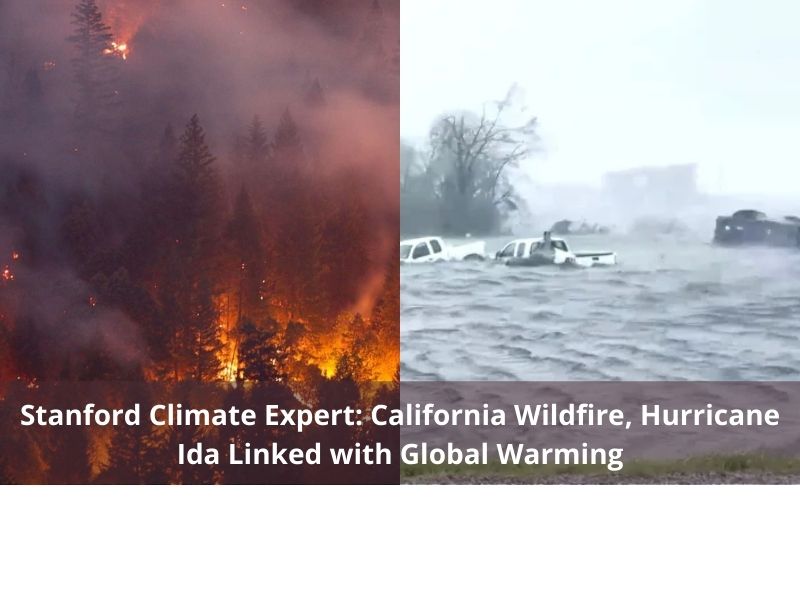Stanford Climate Expert: California Wildfire, Hurricane Ida Linked with Global Warming
San Francisco – California has been experiencing extremely heat-fuel wildfires and along the Gulf Coast, Hurricane Ida made landfall as category 4.
According to a Stanford climate expert, these natural calamities will only get worse as the planet continues to warm up.
“California is officially on a new climate,” says Dr. Noah Diffenbaugh, Stanford Professor of Earth System Science. “CAL FIRE and scientists who take the measurements knew that the vegetation was very dry. We started this year in terms of the summer season in a very severe drought,” the professor added.
According to him, proof of this climate change is the heat waves, dry conditions, and another record-breaking fire season.
Subsequently, along the Gulf Coast, Hurricane Ida made landfall as a category 4 and Louisiana’s Governor is categorizing it as one of the strongest storms to make landfall in modern times.
ABC 7 News interviewed Dr. Diffenbaugh in an effort to explain the relationship of these natural disasters to global warming and to understand how these extreme weather conditions affecting the opposite sides of the country are connected.
“The primary way they are connected is that global warming is happening at a global scale and all parts of the world are experiencing that,” explained Dr. Diffenbaugh.
Recommended Read: Hurricane Ida Causes Spike in Gas Prices as 95% of Production Shuts Down
Further research shows that global warming is changing the circumstances in which hurricanes occur. The Ocean is storing more heat than ever.
“It’s not just how warm the surface temperatures are, but also the heat in the upper layers of the ocean is increasing and that is providing more energy for storms. We are not just seeing stronger storms but a rapid intensification of the storm,” said Dr. Diffenbaugh.
Dr. Diffenbaugh says 90% of the heat that has been added over the last century is in the ocean. He says this is triggering what would be a category 1 hurricane to intensify and grow into stronger categories.
“Decades ago you would see that 1 out of 100 storms would do that. Now we are seeing like a 5% chance of that happening,” he further stated.
According to the professor, as wildfires continue to intensify, the smoke will create more greenhouse gases, worsening the quality of the air.
Recommended Read: California Wildfires: President Biden Approves Major Crisis Declaration
Here is a short transcript of the interview:
Luz Pena: “Should we expect smoke to sit in certain areas for longer periods of time because of the dry conditions?”
Dr. Noah Diffenbaugh: “There is research on these air stagnation events. There is some indication that as global warming increases we could get more frequent occurrence of these air stagnation events.”
“Reaching net-zero is really in terms of our green gas emissions the only way to stabilize the climate system,” said Dr. Diffenbaugh.
Dr. Diffenbaugh says the solution is a different energy system and to reduce greenhouse gases fast.

